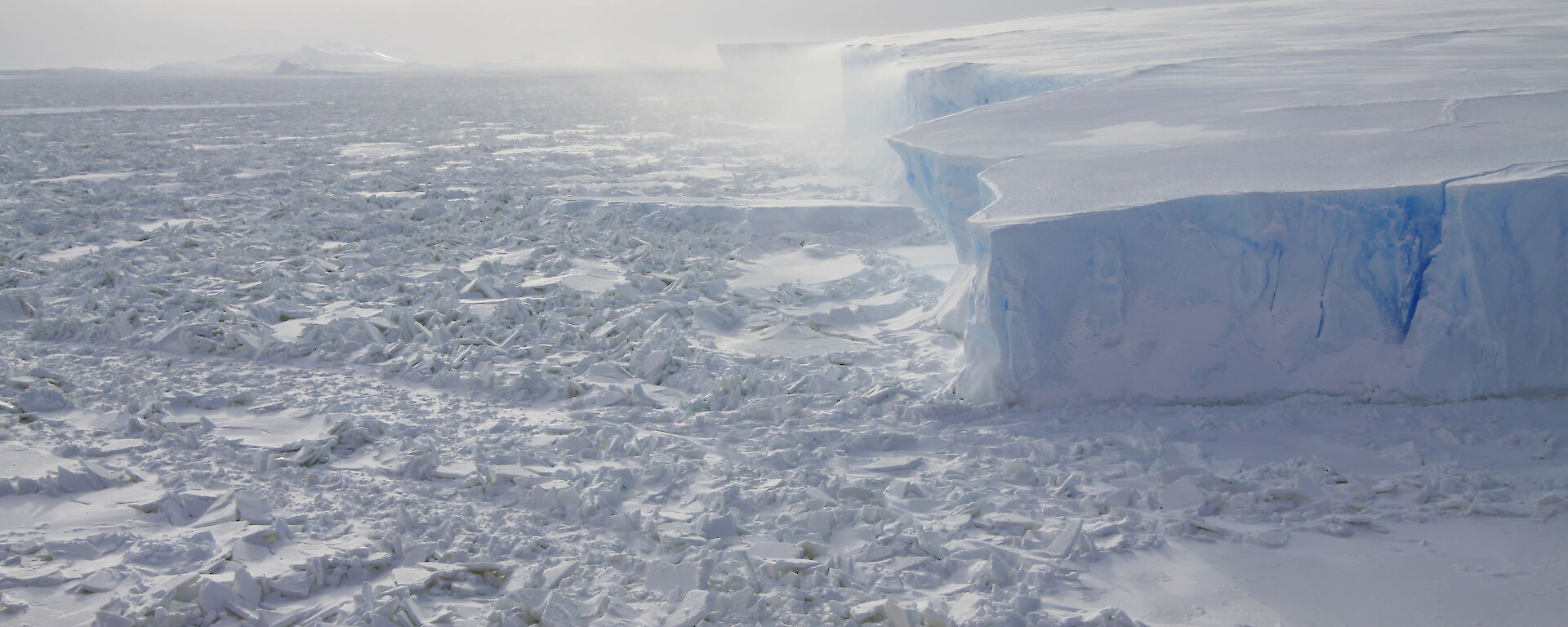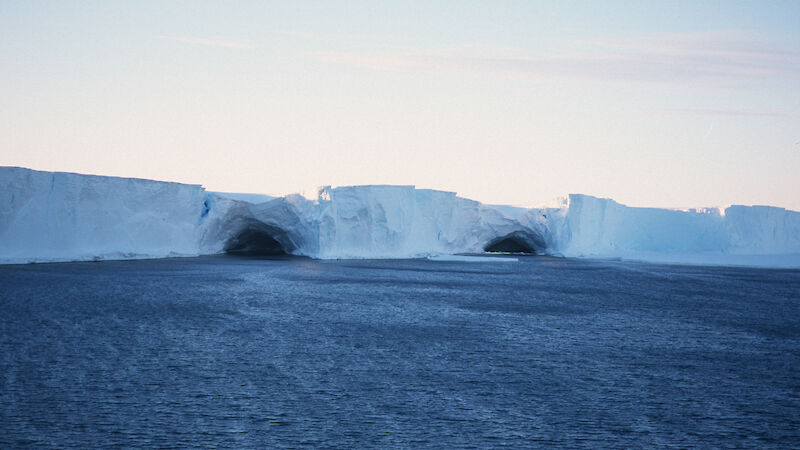Ice shelves end at the continental edge, where the ice calves off to form ice bergs. These areas of floating, fresh-water ice (formed from snow accumulation) are attached to the major ice sheets that cover Antarctica.
Ice shelves are in contact with the atmosphere above, and the ocean below. This makes them the most vulnerable component of the Antarctic cryosphere. They consist of ice that is already afloat, so any change in their volume does not directly affect sea level. However, they have a buttressing effect on the ice sheet, slowing the discharge of inland ice off the continent. This means that changes in the shape and size of the ice shelf can affect the flow of grounded ice from the interior of the continent.
Research at the Amery Ice Shelf, where the Lambert Glacier flows out to sea, aims to understand the thermal and salinity interactions between the ice and the underlying ocean. Scientists have found that ice near the base of the ice shelf is porous and infiltrated with seawater. This makes it highly vulnerable to rapid melting.
The Amery Ice Shelf drains about one eighth of the ice from the East Antarctic ice sheet (about 33 gigatonnes of ice per year). The ice movement rate at the front of the ice shelf is about 1,200 m per year.
It is impossible to know how many ice shelves there are in Antarctica as there are many coastal areas where narrow ice shelves stretch along the coast. The Ross Ice Shelf and the Ronne/Filchner Ice Self in Antarctica are the largest. The Ross Ice Shelf covers an area of half a million square kilometres, and is about 800 km across.
Some of the larger ice shelves in Antarctica include:
- Ross Ice Shelf
- Ronne/Filchner Ice Shelf
- Amery Ice Shelf
- Shackleton Ice Shelf
- George VI Ice Shelf
- Wilkins Ice Shelf
- Larsen Ice Shelf
- Riiser-Larsen Ice Shelf



